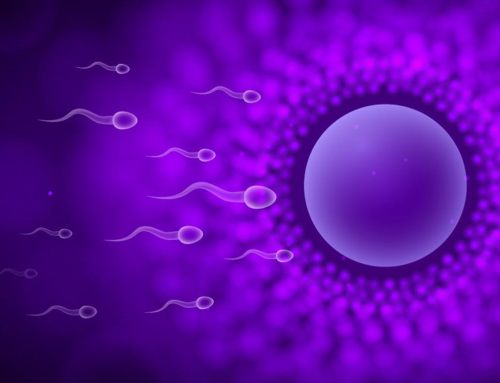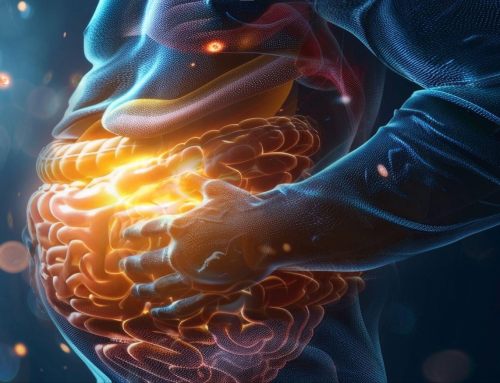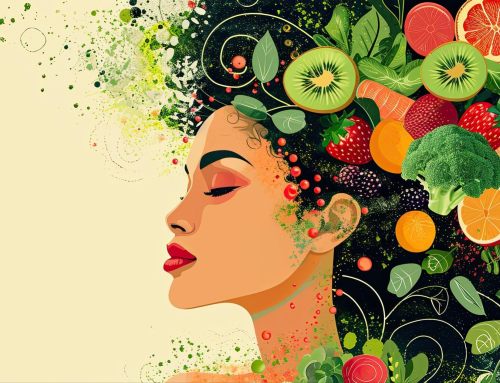Collision Course in the Gut Microbiota? Nano meets Nutrition
There are many beneficial plant substances for human health, but what’s the best way to get them into the body? The encapsulation of substances goes back in history a few decades, with the invention of gelatin capsules being a massive breakthrough for delivering medicines and plant-derived products to the human gut. Encapsulation helps target specific tissues, depending on how the encapsulated substance is delivered into the human body. Encapsulation’s strength is that it allows substances to arrive at the targeted tissue relatively untouched, delivered in a more pristine state than if it had made the journey unprotected. The use of nanoparticle encapsulation is a more recent incarnation of encapsulation. Still, it is quickly building a body of evidence for its success, whether for ingestion, inhalation, injection, or transdermal application (1).
Researchers have recently focused on lipid nanoparticle encapsulation and the targeted delivery of manmade, immune-provoking contents. Yet, couldn’t plant-derived compounds with proven health benefits, such as essential oils, be similarly encapsulated and delivered within the human body? Essential oils have a long anecdotal history of powerful, positive health benefits within the human body. Still, experiments are just now proving where much of that magic happens – in the human gut microbiome. An ever-growing list of positive benefits of essential oils (or their bioactive components) on the microbiome of the human gut is building in the scientific literature.
What impact might nanoparticle-encapsulated essential oils and their components have on the human microbiota and microbiome? What interactions or processes in the gut do essential oils, and nanoparticles share? If one bioactive substance encapsulates another, might they cancel each other out?
The Microbiota / Microbiome: Where Much of the Magic Happens
The gut microbiota encompasses all the bacteria, viruses, fungi, and other microorganisms in the gastrointestinal tract (GI), including those of the small and large intestines. The microbiome is the totality of the genomes of all the microorganisms. The target absorption site for many essential oils (EOs) is the human intestines. When released from encapsulation, these bioactive compounds will go into circulation and head to the liver to be metabolized and sent back into circulation. Some molecules will continue to the large intestine.
The fields of study that give insight into the microbiome and its microbiota are metagenomics (the determination of genetic material) and metabolomics (the analysis of metabolites). Stool and blood samples are also examined. However, even with these methods, it is difficult to capture details about the effects of EOs on the gut. Biopsies of the mucosa of the GI tract, showing what adherent bacteria are present, would give more accurate information than running genetics tests on the stool. Additional clarity would come with determining what occurs outside of the gut by examination of metabolites present in the blood or by testing aspects of the central nervous system and the immune system (1).
The brilliant thing about the microbiome is that it is exquisitely designed to affect the brain and HPA (hypothalamic-pituitary-adrenal) axis from afar. This communication is often referred to as the “gut-brain-microbiome” axis. The GI tract, central nervous system, enteric nervous system, and gut microbiota develop simultaneously in mammals. The microbiota populates the GI tract after initial inoculation from the mother. It can exert hormone-like actions on distal organs through short-chain fatty acids (SCFAs), gut hormones, or neurotransmitter substances made in the gut. Ingested substances can directly affect the host organism and engage in a two-way communication feedback loop.
The Effect of Various Essential Oils (EOs) on the Microbiome & Beyond
Potent plant substances have been used medicinally by roughly 75% of the population worldwide (1). Spices, fruits, and plants contain bioactive compounds called “essential oils” that provoke favorable responses in the host. The action of the EOs occurs through the microbiota, targeting inflammation, the progression of cancers, metabolic diseases, and GI infections.
EOs, derived from plants through steam, solvent extraction, or other methods, are highly volatile, evaporating or degrading quickly. Two large groups of EOs, polyphenols and ursolic acids, have been studied for their beneficial effects. These effects can either directly impact the gut environment or achieve benefits by changing how essential metabolites such as SCFAs are synthesized.
For example, fruit peels contain terpenes, aromatic compounds with many therapeutic actions, such as reducing inflammation, killing bacteria, protecting the GI system, and neutralizing free radicals (1).
One such terpene is d-Limonene, found in the rinds of citrus such as sweet orange. A study performed on obese mice found that d-Limonene decreased the numbers of taxa in the microbiome associated with inflammation, Erysipelotrichaceae, and Peptostreptococcaceae. Surprisingly, high dosages did not render this substance toxic. In a different study on obese mice, d-Limonene shifted bacteria associated with weight loss and improved fat metabolism. One study in mice that were fed a high-fat diet showed that it decreased bacteria related to inflammation, lowered cholesterol, and decreased systemic inflammation.
The antipathogenic activity was another beneficial action of d-Limonene (and y-terpinenes) observed in vitro in compounds from tangerine EOs. These compounds were able to limit three disease-causing bacteria: Campylobacter jejuni, Escherichia coli, and Salmonella enterocolitica (1). In vivo studies need to be performed to prove that the concept holds in the animal model. It has been proven that d-Limonene can reduce the number of pro-inflammatory taxa in vivo. Still, most in vivo studies investigated weight gain, metabolism, and visceral fat rather than levels of pathogenic bacteria.
Nanoparticles (NPs) & the Microbiome
Nanoparticles are tiny particles of matter that measure 100 nanometers or less. Made from a wide variety of materials, they have properties that are useful for applications such as drug delivery (encapsulation), enhancing clarity in imaging technologies, and helping to remove contaminants from soil and water. NPs have become quite prevalent in medicine, cosmetics, self-care products, foods, and the construction, pharmaceutical, and biomedical industries.
Silver and titanium dioxide (TiO2) are two inorganic NPs used in the self-care industry (think mouthwash, toothpaste, pill capsules) and in food. Typically silver and TiO2 are ingested. It is difficult to avoid ingesting NPs as they are ubiquitous in the environment. Estimates say we consume more than 10^13 microns or nanoparticles, which eventually reach our gut microbiota (1).
In the biomedical industry, NPs are recognized as very good antimicrobials, killing various microorganisms depending on the dosage and type of the NP, as well as the strain of the microorganism. The underlying mechanisms of action are still being worked out. However, the antimicrobial power of NPS has been proven to kill many types of microorganisms – viruses, yeast, bacteria, single-celled protozoa, and even mats of biofilm. Proposed mechanisms of action include direct interaction with cell walls, creation of reactive oxygen species (ROS), and release of NP contents into cells.
SILVER (Ag) NANOPARTICLES – Vast amounts of AgNPs are contained in modern products, including food packaging, cosmetics, textiles, electronics, and coatings. They make their way into humans through inhalation, ingestion, or through the skin. In vivo rat studies with a high intake of AgNPs show inconsistent results. Some studies show an impact on the microbiome in the form of decreased amounts of Firmicutes, increased Bacteroidetes, and increased gram-negative pathogenic bacteria. Research indicates that the sizes and shapes of the AgNPs determine what they can kill, which can be manipulated to target a narrower range of microbes.
In vivo mouse studies have displayed an increase in multiple types of bacteria, including species of Staphylococcus, Prevotella, Bacillus, Enterococcus, and Ruminococcus, but also decreases in species of Bifidobacterium. Bifidobacterium is essential for maintaining a healthy microbiome. At the same time, overgrowths of Prevotella and Staph can lead to unfavorable gut imbalances (dysbiosis) with unpleasant symptoms such as inflammation and a weakened immune system.
Interestingly, the increased creation of SCFAs helped reverse adverse effects after the host formed Ag nanoparticles from microbial sulfidation of Ag ions. The SCFAs can bind to silver ions and make them less reactive.
In the human system, AgNPs favored the growth of pathogenic bacteria such as E. coli and Raoultella species. Carefully selecting the size and shape of the AgNPs can significantly narrow the impact of the antimicrobial action. Indiscriminate use acts like a broad-spectrum antibiotic and kills vast swaths of bacteria.
TITANIUM DIOXIDE (TiO2) NANOPARTICLES – TiO2 is another nanoparticle that has an impact on SCFAs. TiO2 NPs are also used frequently in food packaging, as food coloring, anti-caking agents, and a barrier to moisture, light, and oxygen. In vitro studies showed increased Clostridium cocleatum within 48 hours, but several days of exposure lowered SCFA production. Low amounts of SCFA can lead to impaired cognitive function through the gut-brain-microbiome axis. Low SCFA production can also result in a change in pH and the growth of pathogenic bacteria. In vivo studies showed an increase in pathogenic bacteria and a decrease in beneficial bacteria after exposure to TiO2 as well, but it took longer to see this result.
Drinking water studies with varying concentrations of TiO2 showed various changes to the microbiota, including an increase in Lactobacillus in one case and a rise in Akkermansia at the highest doses. While an increase in Lactobacillus might be desirable in some cases, an overgrowth of Akkermansia is associated with adverse symptoms such as diarrhea, abdominal pain, and fatigue. Large amounts of TiO2NPs in the gut could lead to dysbiosis and impair homeostasis in this way.
EOs + Nanoparticles = ?
Now that the individual effects of some EOs and NPs have been reviewed, what about the administration of NP-encapsulated EOs? EOs and NPs are similar in that they both can have antipathogenic actions, killing disease-causing bacteria. The combination of EOs and NPs in this way can be synergistic, increasing the capacity to kill pathogens.
Both EOs and NPs can affect inflammation. However, EOs tend to reduce inflammation, while NPs tend to induce inflammation. What happens when the individual effects conflict, even as the bioactive NPs encapsulate the EOs? Well, suppose the NP is being used to encapsulate the EO. In that case, it can protect the volatility of the EO by helping to control the release of the EO and deliver the EO payload to a specific target. This specificity could reduce the risk of the bacteria becoming resistant to antibiotics. However, it may also have unintended consequences, where properties of the NP may disrupt or undo the positive effects of the EO compounds.
Potential Mechanisms of NP-Encapsulated EOs
What mechanisms of action might NP-encapsulated EOs be utilizing? One potential direct effect is upon inflammation, though NPs would have an inflammatory effect, while EOs would have an anti-inflammatory effect on the microbiota. EOs, for example, might exert change upon TNFα, reducing it and thereby reducing inflammation. Whereas NPs might induce inflammation in the gut by increasing TNFα. With these actions countering each other, the risk for “unintended effects” increases (1).
There may be a direct effect on NP-encapsulated EOs upon the diversity of the microbiota. While it’s been proven that EOs can reduce pro-inflammatory phyla of bacteria, NP effects upon pro-inflammatory phyla are “inconclusive (1).” Most NP studies indicate NPs can easily induce dysbiosis and gut diseases related to microbial imbalances, such as obesity, inflammatory bowel disease, and even colorectal cancer.
Both EOs and NPs can have direct antipathogenic effects on many microbes, including food pathogens such as Salmonella and E. coli. In this case, EOs and NPs appear to have a synergistic impact, combining to have an enhanced antibacterial action in both in vivo and in vitro studies. This synergistic effect can even counter multi-resistant strains and slow the spread of infection.
Lastly, one potential result of the combination of NPs with EOs is the decrease in SCFAs through altering the bacteria (Bacteroides and Firmicutes) that produce SCFAs through fermentation of fiber and resistant starch. SCFAs are very beneficial to gut health and can be considered therapeutics. They help maintain the gut barrier, produce mucus, and protect against inflammation. Not only do SCFA work locally to maintain the gut, but they also have distal effects on the brain. Dysbiosis, which results in low levels of commensal bacteria, could also hurt SCFA numbers and allow many opportunistic pathogens to grow.
In summary, combining NP encapsulation with EO bioactive compounds could have unexpected results. The potential for both synergistic and opposing actions of NP-encapsulated EOs warrants special consideration of testing parameters. While impractical, samplings of the gut mucosa would help obtain a clearer picture of the dynamics. Additionally, the experimental design would need to encompass a way to capture simultaneous inflammatory and anti-inflammatory actions within a tiny region to correctly attribute effects to either the NP encapsulation or the EO contents.
Sources:
1. Lazar V, Holban AM, Curutiu C, Ditu LM. Modulation of Gut Microbiota by Essential Oils and Inorganic Nanoparticles: Impact in Nutrition and Health. Front Nutr. 2022 Jul 8;9:920413. doi: 10.3389/fnut.2022.920413. PMID: 35873448; PMCID: PMC9305160.












